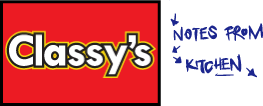So while we were all thinking Microsoft had quietly decided that the browser is good enough as it is, and now that the other browsers are all getting to be so much better than Microsoft's, they were in fact secretly at their old monopolistic tricks again according to Jon Udell. MS is introducing new 'standards' for rendering of text and vector graphics, potentially breaking CSS and SVG - and XML Schema. Is Longhorn going to send us back to the sad world of "vendor backed standards" instead of real standards?
Innovation is perfectly legitimate, and in fact I think Udell is not entirely fair when he suggests that XML Schema is somehow the final word on structured metadata representation, but it's good to be on the alert from the very beginning.
Additional commentary may be found on ongoing.
UPDATE
Udell's post has prompted plenty of reactions from microsoftees, some of them recorded here. My take on the responses: As to a new schema language, I think the points made are valid, particularly the notion that is is better to define a new schema format to fit than to imply semantics for an existing format that aren't part of the standard in the first place. As to an SVG replacement, the arguments seem completely gratuitious and mainly a question of ownership. I suspect arguments in favor of Microsoft's CSS replacement will be equally vacuous. More fun can be had reading an excerpt of an interview on Mozilla XUL versus MS XAML.
While it is debateable whether XUL is anything resembling a standard, the arguments given to answer the questions of why MS is rolling its own version of the same idea are completely gratuitous and amount to nothing more than "XUL is not owned by Microsoft": I quote:
Q. What s the difference between XUL and XAML?
A. XAML is designed to map Avalon objects directly into XML tags; XAML is rendered directly by the Windows Longhorn operating system; with XAML, developers interleave XAML tags with procedural languages such as C#, VB, J#, COBOL, Jscript, and so on. XUL is designed to map Mozilla widgets into XML tags; XUL is rendered by the Mozilla browser; with XUL, developers interleave XUL tags with JavaScript.
(i.e. "XAML is the exact same thing, but made by us, and since we own the platform we can make it work for more applications than the Mozilla project could for XUL")
Q. Why did you create XAML instead of using XUL?
A. XAML gives developers richer control over the Longhorn user interface: its tags map directly into objects in the Avalon engine, and developers get a choice of programming language. In short, they re going to be able to build very rich Avalon UI with their existing programming language skills.
(i.e. "Because we will own XAML. Since we own the platform we can make it work for more applications than the Mozilla project could for XUL")
UPDATE II
Better description of differences here - Obviously leveraging .NET gives advantages including bytecode compilation with much improved GUI performance as a consequence. Can't wait for the mono implementation.
